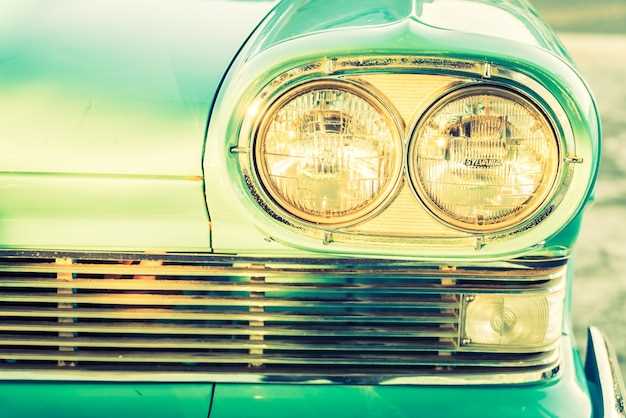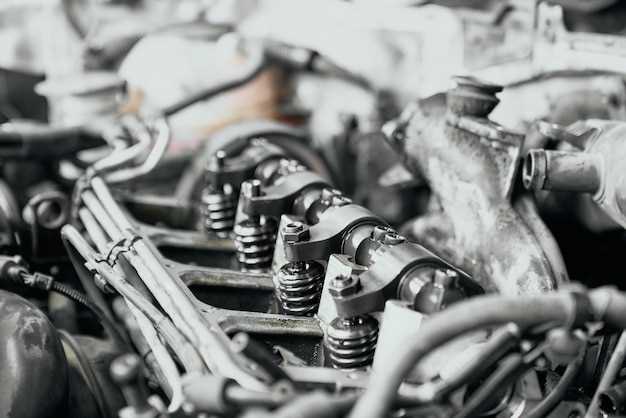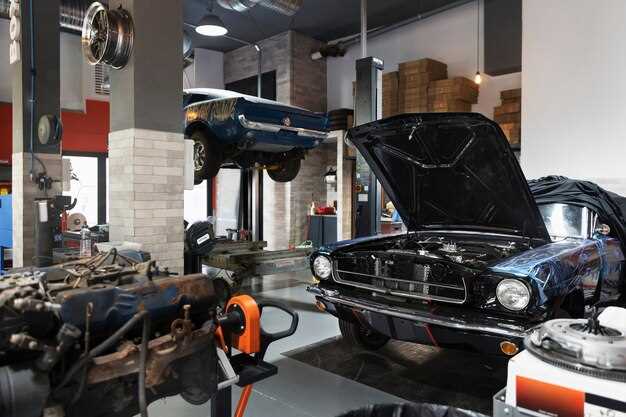
The classic Dodge Charger has long been a symbol of American muscle, celebrated for its powerful performance and iconic design. As automotive enthusiasts continue to embrace the restomod movement, where vintage vehicles are upgraded with modern technology, the practice of swapping engines has become increasingly popular. This approach not only revitalizes these classic beauties but also enhances their drivability and efficiency.
Engine swaps in classic Dodge Chargers provide owners with a golden opportunity to retain the aesthetic appeal of the original design while integrating cutting-edge performance. From installing high-output HEMI engines to modern LS swaps, each choice brings a unique character and energy to the vehicle. The benefits of such modifications are substantial, often leading to improved horsepower, torque, and fuel economy, allowing these timeless classics to thrive on today’s roads.
In this article, we will delve into key considerations for engine swaps in classic Dodge Chargers, including the necessary modifications, potential challenges, and the overall impact on vehicle value. Whether you are a seasoned mechanic or a nostalgic enthusiast embarking on your first restomod project, understanding the intricacies of engine swapping will empower you to make informed decisions and enhance your Charger’s performance for years to come.
Selecting the Right Engine for Your Dodge Charger Swap
When it comes to swapping engines in classic Dodge Chargers, making the right selection is crucial for achieving the desired performance, reliability, and aesthetic appeal. The process is often part of a broader restomod project, where modern amenities and advancements are integrated into vintage vehicles. Consider the following factors to guide your decision.
1. Performance Goals: Define what you want from your engine swap. Are you aiming for increased horsepower, torque, or improved fuel efficiency? A high-performance engine, like a HEMI, may offer thrilling acceleration, while a newer crate engine may provide better reliability and lower fuel consumption.
2. Engine Compatibility: Ensure that the chosen engine fits well within the existing chassis and mounts of your Charger. Consider the modifications that may be necessary for installation, including new motor mounts, transmission supports, and electrical connections.
3. Weight Distribution: The weight of the new engine can impact the vehicle’s handling characteristics. A heavier engine may alter weight distribution, affecting cornering and overall driving dynamics. Select an engine that maintains a balanced feel, enhancing the driving experience.
4. Transmission Pairing: Compatibility with the transmission is vital for seamless performance. Decide whether to keep the original transmission or upgrade to a modern option that matches the new engine’s power output. This choice can influence shifting quality and overall driving satisfaction.
5. Emissions Regulations: Be aware of your local emissions laws, especially when considering swapping in a non-original engine. Newer engines often come with advanced emissions controls, which can help keep your vehicle compliant while benefiting from modern technology.
6. Budget Considerations: A budget should include not just the cost of the engine itself, but also additional expenses such as installation, potential modifications, and supporting components. Cheaper engines may lead to higher costs in the long run if they require extensive modifications or repairs.
In conclusion, selecting the right engine for your Dodge Charger swap is a complex yet rewarding process. By thoroughly assessing your performance goals, compatibility, weight distribution, transmission needs, emissions regulations, and budget, you can make an informed choice that enhances both the performance and enjoyment of your classic vehicle.
Essential Tools and Parts Needed for an Engine Swap

When planning a restomod project on a classic Dodge Charger, having the right tools and parts is crucial for a successful engine swap. Begin with essential hand tools such as ratchets, sockets, and wrenches in various sizes, which will be necessary for removing old components and installing the new engine.
Engine hoists and engine stands are vital for safely lifting and supporting the engine during the swap process. These tools help prevent injuries and damage to both the engine and the vehicle. Additionally, a torque wrench will ensure that all bolts are tightened to the manufacturer’s specifications, preventing future mechanical issues.
You will also need a variety of parts specific to the engine you are swapping in. This includes motor mounts that fit your new engine and are compatible with the Charger’s frame. An updated transmission may be required, especially if the new engine has different power characteristics or demands. Don’t forget to include a new radiator and cooling system, as the engine’s cooling needs may differ from the original setup.
Other essential parts include wiring harnesses, fuel lines, and exhaust components that match the new engine. Depending on the specific requirements of your chosen engine, you might also need upgraded braking systems or rear-end components to handle increased power and torque.
Lastly, invest in safety gear. Gloves, goggles, and a fire extinguisher are indispensable when working on any engine project. With these tools and parts at your disposal, you will be well-equipped to tackle the exciting challenge of swapping engines in your classic Dodge Charger.
Steps to Complete a Successful Engine Swap in a Classic Charger

Swapping the engine in a classic Dodge Charger can transform it into a powerful restomod, enhancing both performance and reliability. Here are the essential steps to ensure a successful engine swap.
First, ensure you have the right tools and workspace. A clean, organized garage with sufficient space to maneuver is crucial. Gather tools like wrenches, sockets, a floor jack, engine hoist, and stands, ensuring you have everything on hand before you begin.
Next, select the appropriate replacement engine. Consider factors such as power output, compatibility with the Charger’s transmission, and emissions regulations. Popular options include modern HEMI engines or LS swaps, depending on your performance goals.
Once you’ve chosen an engine, begin by preparing the Charger. Disconnect the battery and drain fluids, including oil and coolant. Remove components obstructing engine access, like the hood, radiator, and wiring harness. Label all connectors and hoses for easier reassembly.
Carefully detach the existing engine from the transmission. Utilize the engine hoist to lift the old engine out of the bay, ensuring to follow safety precautions throughout this process. Inspect the engine bay for any rust or damage during this phase, addressing issues before introducing a new engine.
After removing the old engine, clean the engine bay thoroughly. This step is often overlooked but is essential for a clean installation. Use this opportunity to replace worn-out mounts and gaskets to prevent future issues.
Install the new engine by aligning it with the transmission and securing it with the appropriate mounts. Ensure that all components, including exhaust, intake, and wiring harness, are correctly fitted. Double-check the alignment before bolting everything into place.
Once the engine is securely in place, reconnect all wiring and hoses according to the labels made earlier. Ensure that electrical connections are tight and that there are no leaks in the fuel system.
Fill the engine with oil and coolant, then reattach the battery. Before starting the engine, turn the ignition on to ensure the fuel system is primed without actually starting it, checking for leaks. This preventive measure can save you from potential disasters.
Finally, crank the engine to check for proper operation. Monitor gauges and listen for any unusual sounds. If everything seems in order, take the Charger for a test drive, gradually increasing speed to evaluate performance. Making adjustments to the tuning or setup may be necessary after the initial test drive.
Completing an engine swap is a rewarding project that, when done correctly, significantly enhances the driving experience of a classic Dodge Charger. Remember to document your process and share your journey with the restomod community!




